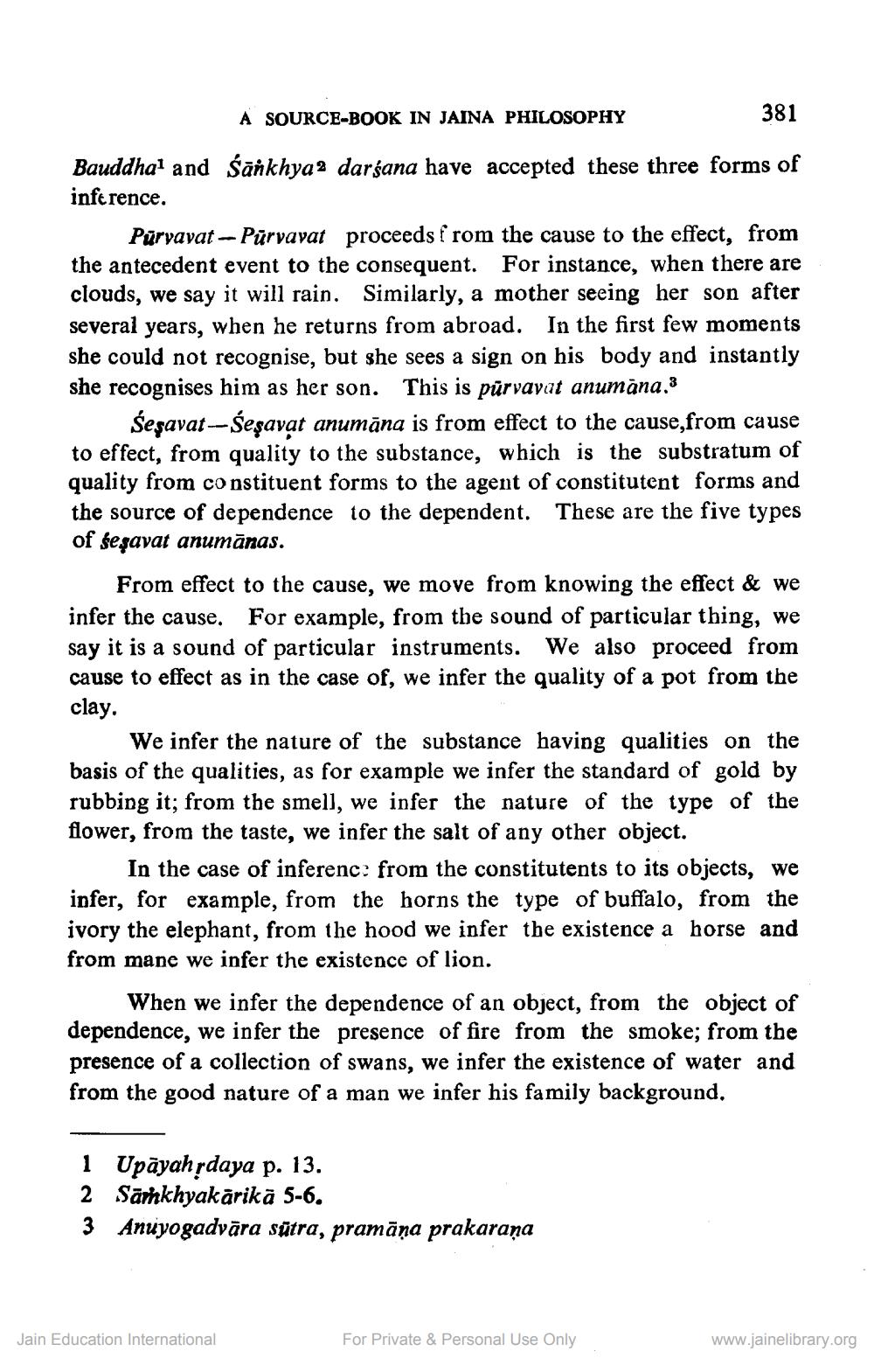________________
A SOURCE-BOOK IN JAINA PHILOSOPHY
381
Bauddhał and śānkhya2 darśana have accepted these three forms of inference.
Püryavat - Puryavat proceeds from the cause to the effect, from the antecedent event to the consequent. For instance, when there are clouds, we say it will rain. Similarly, a mother seeing her son after several years, when he returns from abroad. In the first few moments she could not recognise, but she sees a sign on his body and instantly she recognises him as her son. This is pūrvavat anumāna.3
Śesavat-sesavat anumāna is from effect to the cause, from cause to effect, from quality to the substance, which is the substratum of quality from constituent forms to the agent of constitutent forms and the source of dependence to the dependent. These are the five types of seşavat anumānas.
From effect to the cause, we move from knowing the effect & we infer the cause. For example, from the sound of particular thing, we say it is a sound of particular instruments. We also proceed from cause to effect as in the case of, we infer the quality of a pot from the clay.
We infer the nature of the substance having qualities on the basis of the qualities, as for example we infer the standard of gold by rubbing it; from the smell, we infer the nature of the type of the flower, from the taste, we infer the salt of any other object.
In the case of inferenc: from the constitutents to its objects, we infer, for example, from the horns the type of buffalo, from the ivory the elephant, from the hood we infer the existence a horse and from mane we infer the existence of lion.
When we infer the dependence of an object, from the object of dependence, we infer the presence of fire from the smoke; from the presence of a collection of swans, we infer the existence of water and from the good nature of a man we infer his family background.
1 Upāyah sdaya p. 13. 2 Sarhkhyakārikā 5-6. 3 Anuyogadvāra sūtra, pramāna prakaraña
Jain Education International
For Private & Personal Use Only
www.jainelibrary.org




